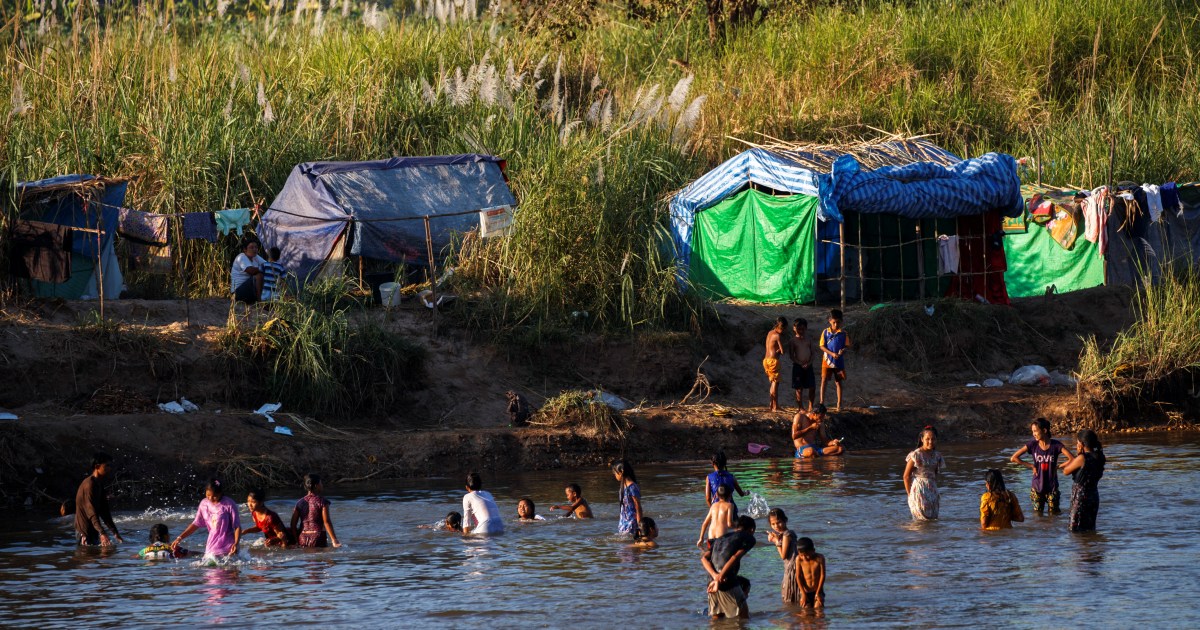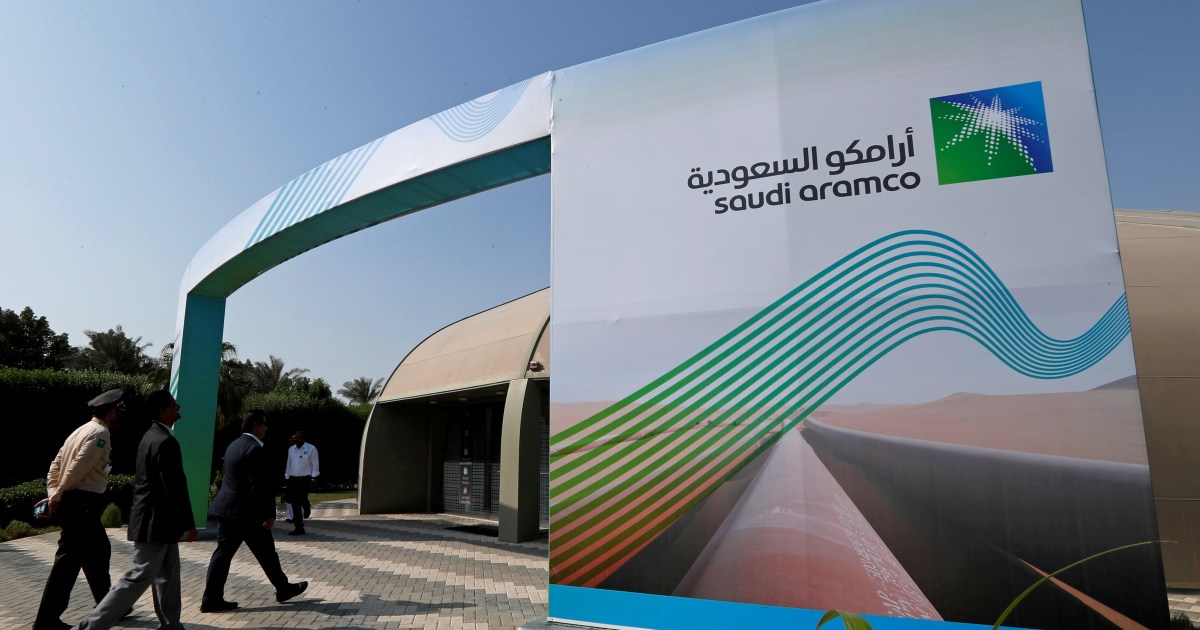Myanmar refugees in Thailand endure resettlement wait | Refugees News
Thailand/ Myanmar border – As an evening thunderstorm rolled through a border town in Thailand in May, a group of families from Myanmar celebrated the onset of the rainy season together from their compound. Men chewed betel and drank tea from the veranda; children ran around until their clothes were drenched; a woman wearing a sarong brought out shampoo and washed her hair.
While they enjoyed the break from the stifling heat, it was a momentary respite for the families, who are all refugees.
They come from vastly different backgrounds: politicians and community organisers, civil servants who refused to work under the military government, and general citizens swept up in the pro-democracy movement. Their stories converge in that they all fled their homes following last February’s military coup, crossed irregularly into Thailand, and appealed to the United Nations refugee agency (UNHCR) for humanitarian protection.
Unable to safely go back to Myanmar or to stay legally in Thailand, which does not recognise refugees living outside of camps, they are among 288 refugees from Myanmar who were referred by the UNHCR in Thailand to the governments of third countries for resettlement consideration since the beginning of 2021, according to the UNHCR’s online database. This number may also include refugees who crossed into Thailand before the coup, having fled former waves of persecution and violence.
The resettlement screening process has no fixed timeline, and some of the families with whom Al Jazeera spoke said that they began the process more than a year ago. While they wait, they rarely venture beyond the perimeter of their compound due to their undocumented status.
As they watch the seasons change together, grieving for what they left behind and anticipating what lies ahead, they have nurtured steadfast friendships.
“We came here, met each other and became a community,” said Saw Htoo, a Baptist reverend from Myanmar’s Karen ethnic minority. “We share common ground, which makes it easier to face our problems.”
He and other refugees featured in this report have been identified by pseudonyms and their location has been withheld for security reasons.
Urban refugees
In the 17 months since Myanmar’s military seized power, it has attempted to purge the country of dissent and destroy widespread resistance to its rule. Soldiers and police have shot hundreds of nonviolent protesters dead, while the military has responded to the rising armed resistance movement by attacking communities with bombings, artillery fire and arson.
Nearly 800,000 people have fled their homes since the coup, according to a UN monthly humanitarian update published in June, which identifies 758,000 people displaced within Myanmar and 40,000 who crossed into India.
The report makes no mention of refugees in Thailand; in a response to emailed questions, Morgane Roussel-Hemery of the UNHCR’s Thailand office told Al Jazeera that as of June 22, there were no refugees from Myanmar living on the Thai side of the border according to the Thai government.
She added that the Thai government was leading the country’s refugee response at the border, where it had established standard operating procedures last March stipulating that all refugees were to be housed in “temporary safe areas” under Thai army administration.
Although 20,000 people had been housed in these areas as of June 22, all of them had returned to Myanmar “after the fighting reportedly subsided”, said Roussel-Hemery, again citing the Thai government. The UNHCR had not been granted access to determine refugees’ protection needs before they returned, she told Al Jazeera.
Rights groups including Human Rights Watch and Fortify Rights have reported that Thai officials have at times pushed back refugees from Myanmar and blocked their entry across the border; the Thai government has denied these claims.
The situation has deteriorated since the last week of June, when heavy fighting broke out between the military and armed resistance groups near the Thailand border. Myanmar military forces have since repeatedly attacked the area from the air, causing casualties among civilians and fighters.
Roussel-Hemery of the UNHCR told Al Jazeera that between June 29 and July 4, the Thai government had counted 1,429 people from Myanmar who had fled to Thailand, of whom 802 remained in “temporary safe areas”.
The UNHCR declined to respond to Al Jazeera’s requests for information about the number of “urban refugees”, or those living outside of camps, instead emphasising that their safety was primarily the responsibility of the state.
‘Dismantling a raft’
But with urban refugees unrecognised and uncounted by the Thai government, they remain in a precarious situation. Al Jazeera spoke with three of them about why they came to Thailand and how they are enduring their current situations while they wait for potential resettlement.
One of them is Thida, who along with her husband joined throngs of protesters in Yangon in the weeks after the coup, and by May, had gone into hiding for fear of arrest. In October, when Thida was eight months pregnant, the couple decided to leave the country.
They hid in a village near the border for a week before crossing into Thailand in the rain, carrying their belongings on their backs. “It was very difficult and I kept slipping. It is so lucky that my baby survived,” said Thida. “When I first got here, I was so happy that I started crying, because I knew that I wouldn’t die.”
For Saw Htoo, the moment to flee home came last March. His wife, a hospital administrator in Mandalay, was among hundreds of thousands of civil servants who had refused to work under the military administration; weeks after the military began arresting people who joined the strikes, the couple decided to leave the city with their elementary school-aged daughter.
During the next eight months, they gradually made their way more than 800 kilometres (497 miles) southeast in search of safety and a place where their daughter could go to school, and in November, they sold their belongings and crossed into Thailand. “We left everything in Burma and we fled,” said Saw Htoo. “According to a Burmese proverb, it is called ‘dismantling a raft’.”
They hid in close quarters with other families for about four months before moving into their current housing. “By then, we had moved around six or seven times, and we were starting to go crazy,” he said. “Going from place to place, [my daughter] always asked, ‘When will we have to move again?’”
Now, his daughter passes her time in the room she shares with her parents or playing with the other children in the compound, including the daughter of Ko Ko. A prominent figure in the Myanmar Muslim community and activist promoting social cohesion between Muslims and Buddhists, Ko Ko had also run an online news channel focusing on Myanmar Muslim issues. Although he shut it down within days of the coup, he knew he wasn’t safe. “I was always expecting someone to come and knock on the door to arrest me,” said Ko Ko, who is from the city of Naypyidaw.
But it was his brother, a university lecturer, who first ran into trouble. Last May, the military issued a warrant for his arrest because he refused to work under its administration, and the two brothers decided to flee to Thailand. “I thought that after one or two months, this [regime] would all be finished,” said Ko Ko. “I thought the military would fall and then I would go home and resume my work.”
But the crisis in Myanmar only worsened, so three months later, the brothers instead brought over their parents, wives, and four young children. The families faced a difficult journey – first camping in tarpaulin tents in the rain, and then wading across the waist-deep Moei river at night and walking through muddy hills and fields – before they were reunited with the two brothers.
“One strange thing is that usually, children cry in the rain, but my baby was so scared that she didn’t cry,” said Ko Ko, whose daughter was just months old at the time. His father, meanwhile, is in his 70s and uses a cane to walk. “My father told me that he had never experienced anything like that in his whole life,” he said.
‘We are family’
In the months since they began the resettlement screening process, the families have taken up a range of activities to pass the time. At sunrise, they walk and jog in circles; at sunset, they play badminton and chinlone, a traditional Burmese sport. During the day, women crochet scarves and hats in anticipation of snowy winters ahead, while Saw Htoo gives basic English and mathematics lessons to his daughter and his neighbours’ children, incorporating skills like counting nickels and dimes. “I have no teaching background and I don’t know the methodology, but I’m trying to teach the kids as best as I can,” he said.
Although Ko Ko and his family have no income, they often cook meals, which they share with the other families. “I decided that I would help others here however I could. Now, it has become like we are family,” he said. “Although we have different ethnicities and religions and come from different places, we are all experiencing the same life.”
But he and others interviewed said that sorrow, survivor’s guilt and anxiety hang over them. In March, following clashes between military forces and local resistance groups in Khin-U township in Myanmar’s northwestern Sagaing region, military forces set hundreds of homes on fire, forcing Thida’s parents to flee to Yangon. “After I get [to a third country], I will be safe, but my parents are left behind,” she said. “I cannot even think yet about what will happen to them.”
Saw Htoo worries for his wife, who is now pregnant, and his daughter, who has been out of school for more than two years. “We cannot think about what to do tomorrow because our resettlement time is not sure,” he said. “We don’t have any backup plan. Sometimes, a refugee is just a refugee.”
To cope, he turns to his Christian faith and the Biblical story of the Israelites’ exodus from Egypt. “I just pray to God, ‘Lead us in thy will,’’ he said. “[The Israelites] moved for 40 years to the milk and honey land, and in the middle of the journey, each day they took manna from the sky. For the time being, I have that feeling.”
Ko Ko draws on his Muslim faith, and focuses on giving his children the opportunities he never had. “Two-thirds of my life is already gone, so I am not thinking of myself, but just my children,” he said. “I hope that my children can achieve what I couldn’t, and that they can reach their full potential. That is what I am trying for when I get to a third country.”
This article was supported by a grant from ARTICLE 19 under Voices for Inclusion, a project funded by the Netherlands Ministry of Foreign Affairs.





Pingback: turkey tail mushroom capsules holland and barrett
Pingback: turkey tail mushroom capsules reviews
Pingback: buy Dmt vape pen in Switzerland,
Pingback: our website
Pingback: imp source
Pingback: https://eurofinsgenomics.com/handlers/sitenavigator.aspx?returnurl=https://gas-dank.com/